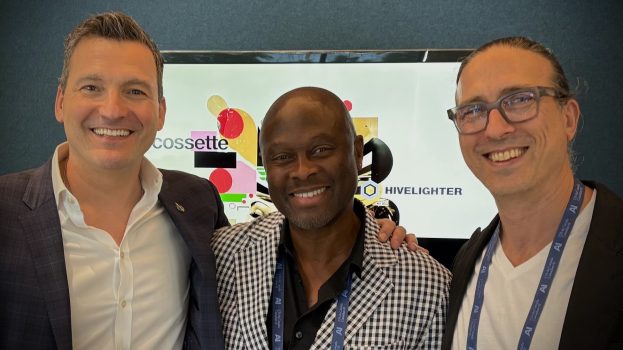“One of the things we’re learning to do is to believe in the impossible.”
So started Kevin Kelly’s keynote address at this year’s ICA FFWD Ad week. The founding executive editor of Wired magazine, technophile, author and speaker, gave the audience at Toronto’s Design Exchange the example of the smartphone – an otherwise absurd idea in the early ’90s, when computers often took up large spaces on desks and required floppy disks to start.
But evolution of the computer happened relatively quickly, and he says to expect even more changes to flow through the next 20 years, and that all the advances that have gotten us to this point are small potatoes in comparison. As we enter the next wave of computing technology (wearables, holograms, etc), we’re just now learning that anything is possible.
What does this mean for marketers?
Living in a hyper-screened world
Today, we’ve become a people of the screen – meaning our culture revolves around the pixels in front of us, democratizing culture and creating a more fluid environment for humans to play in. As screens become more ubiquitous (with Kelly saying one day screens will blanket every surface), the audience will be everywhere, all the time.
Screens will continue to evolve, he predicts, pointing to things like Google Glass and Samsung’s Galaxy 4, which take advantage of eye tracking to become more interactive with consumers. Content, already in abundance, will adapt and will likely start to change based on how it’s being watch (think, content that puts the image you’re meant to see where your eye is moving).
And as screens compete with each other (living in, what Kelly calls an ecosystem – i.e. the TV works with the smartphone while the computer screen falls into the background), it’ll be attention that acts as a currency
All the while, our views on ownership are changing – as more information moves to the cloud, we’re freed from the burden of cumbersome “things.” You’ve already seen it in the book and movie industry – but he suspects that as 3D printing takes off, we’ll continue to see it in other spaces as well. (Check out Max Valiquette’s musings on the very same topic).
The attention economy
 In order to stand out in both the digital and real world, content we consume and “things” we own will become ever more personalized, symbolic of who we want to be seen as.
In order to stand out in both the digital and real world, content we consume and “things” we own will become ever more personalized, symbolic of who we want to be seen as.
This ultra personalization will only be achieved if consumers give up their personal data – of which we’re only just starting to see. Vanity (“this item was created for me”), he says, will trump our desire for privacy. This means, as we move forward into the future, people will begin to share ever-more information that people never thought they would.
So where does this lead marketers? Attention – he says – will be the currency in this new economy. And while the value of a consumer or influencer’s attention isn’t a new concept for marketers (i.e. getting someone with 50,000 Twitter followers to recommend a product), Kelly says its time to start thinking outside the box. If we’re in an attention economy, what would happen if we paid people to watch an ad? Or if we encouraged consumers to curate the best ads on their own. What about a peer-to-peer social ad sharing space? Or a magazine with completely customized and tailored ads individually created for each reader?
This is mostly hypothetical of course. But Kelly says the data exists for marketers and media companies to begin heading down this path.
Breaking through streams of information
Which leads to his final point of the talk – flow of information. We live in a world of “streams” now – Netflix, Facebook, Twitter – our information comes at us in streams (most often curated by us) in real time (“If you’re not in real time, it doesn’t count,” Kelly says). What’s more, it’s always on.
And as wearable technology starts to make waves we’ll start to move into a period of what Kelly calls quantified self. (Google Glass will never be the item that makes wearable technology popular Kelly says, it’s dorky and fails as a fashion statement, but the thing that comes after Google’s Glass probably will.) Devices will be able to tell us everything about ourselves, from the calories we intake to the steps we take, whether we’re getting enough sleep or are productive enough – all of which consumers will happily sell back to marketers in exchange for more personalized experiences.
And, in our uber-screened world, with our desire for even more personalized products at our fingertips, all competing for attention, it’ll be the data that pulls a brand ahead. Whereas once the medium, like TVs, radios and books, that captured audiences attention, in tomorrow’s world, data will act as the new media.
“The thing in short supply is attention. It’s easier and easier to make something now-a-days, and harder and harder to get attention,” he says. “Data is going to be the way you can manage attention and optimize it.”
Vector of thinking image courtesy of Shutterstock.























